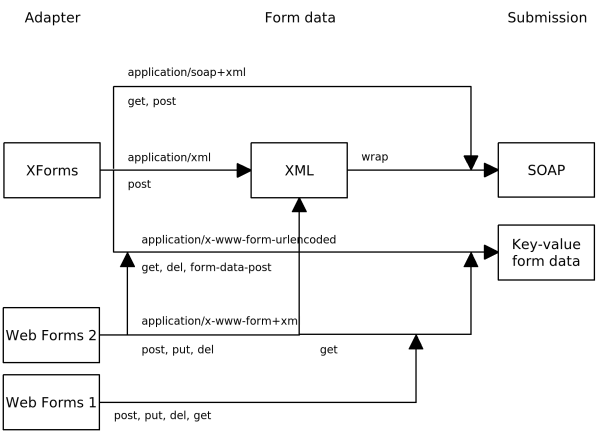In order to give students and other interested people some more insight at what might be the next big thing according to our optimistic opinion, this blog now features a research category.
The first entry shall be about my pet project Dynvoker. While I'm currently not able to work on it much during my work time, there are still some changes now and then. One of the most recent additions is a WADL parser contributed by Christian Liebing. Along with other modifications, the dynvoker-generic-branch transforms the application into a multilaterally generic framework. The generic dimensions encompass the service description formats, the output formats, the protocol for communication with the web service and the choice of runtime environment. A fifth, rather imaginary dimension would be the integration into complex processes.
Going generic is essential in service-oriented environments, given that on the one hand the promise of SOA is the flexible wiring and re-wiring of services, and on the other hand there is as always a plethora of protocol options available in real-world applications.
The following picture illustrates the options between output formats and submission formats alone:
Add to this that various service description formats support several submission formats, and the confusion arrives at the highest level. But do ordinary users care? No, they certainly don't, and that's why user interfaces for services need to hide this complexity. The generic approach of Dynvoker is an important step into this direction. Details will be presented at the ServiceWave 2008 conference in Madrid which also has a workshop on common goals towards UIs for services. Let's see if I will be able to attend since at the same time there's another workshop on monitoring and adaptation, my current dia em dia topic which will soon lead to another blog post.
